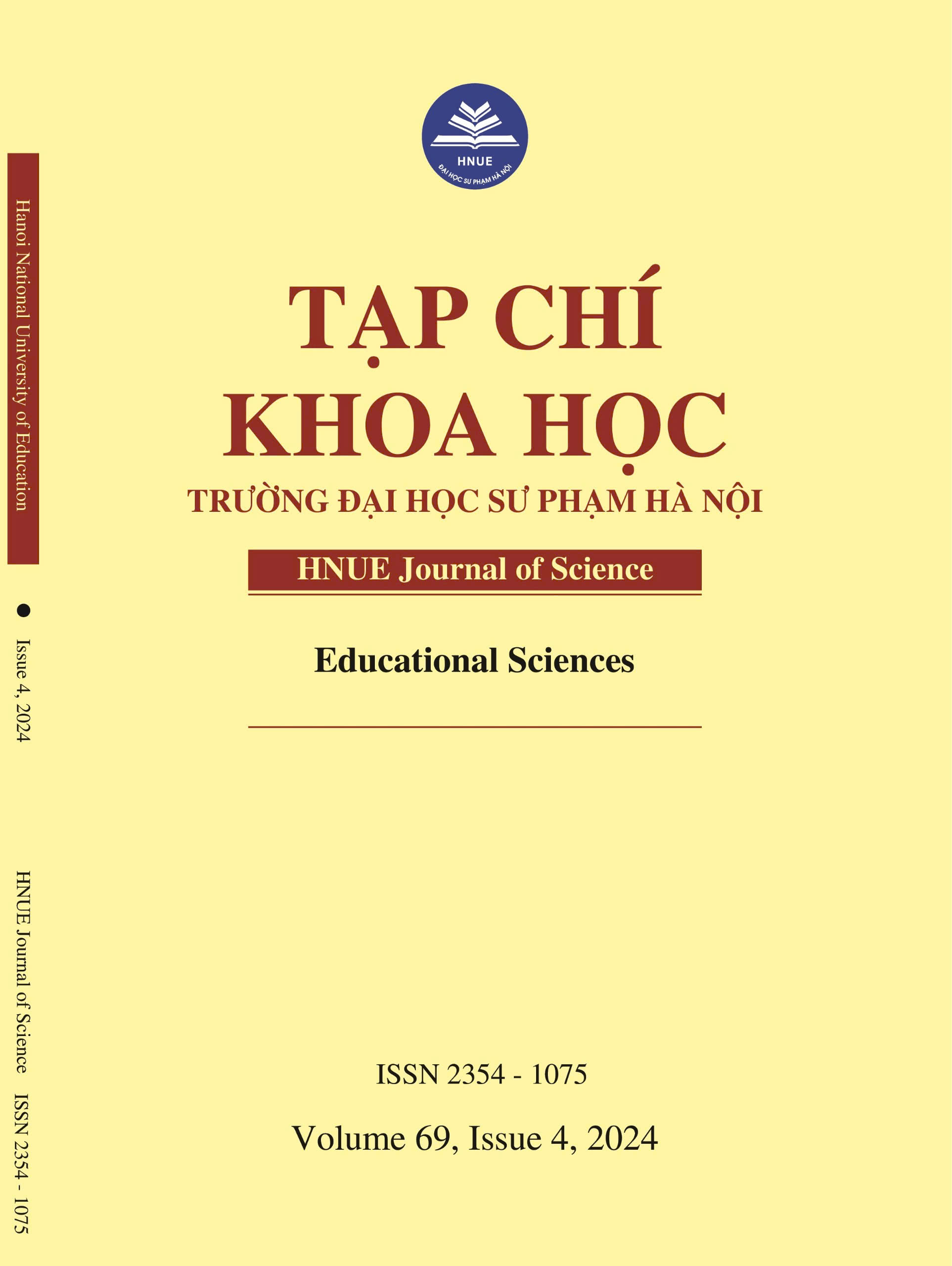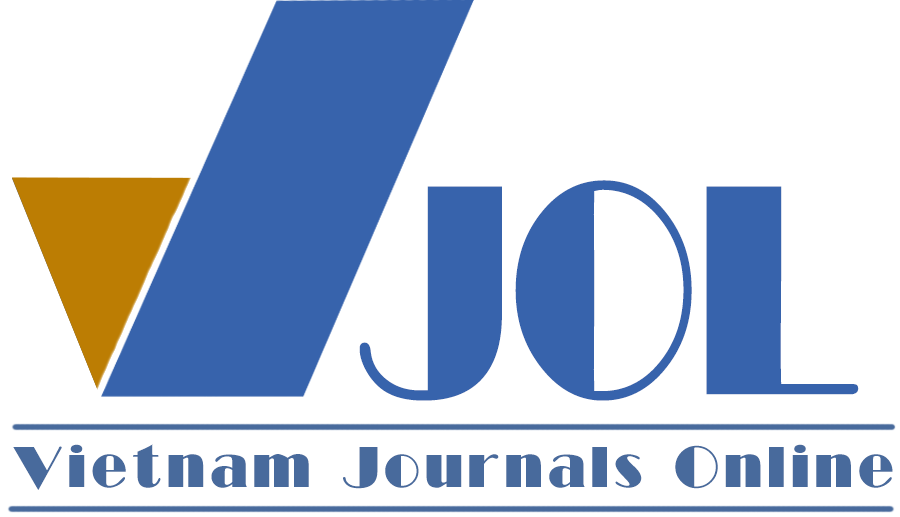DEVELOPING AUGMENTED REALITY CLASSROOM USING TPACK MODEL FOR TEACHING GENERAL CHEMISTRY IN HIGH SCHOOLS
DOI:
https://doi.org/10.18173/2354-1075.2024-0074Keywords:
augmented reality, TPACK model, chemistry education, general chemistry, high schoolAbstract
In the digital transformation era, the integration of Information Technology in education is pivotal. Augmented Reality (AR), with its capacity to visualize abstract concepts, is increasingly recognized as a valuable tool in Chemistry education. The abstract nature of general Chemistry content, like the visualization of atoms and molecules, poses significant comprehension challenges for high school students. This study aims to investigate the effectiveness of AR in enhancing the understanding of general Chemistry among high school students using the Technological Pedagogical Content Knowledge (TPACK) model. The research data included 90 high school chemistry teachers from high schools in four northern provinces, collected through classroom observations and surveys using a 5-point Likert scale; the data were analyzed using both descriptive and inferential statistics. The findings indicate significant improvements in students' understanding of Chemistry when taught using AR-integrated lessons designed with the TPACK model. Students demonstrated enhanced engagement, better conceptual grasp, and increased satisfaction with the learning process. AR technology, when integrated with the TPACK framework, substantially enhances the learning of general Chemistry in high schools. This study supports the broader application of AR in educational settings to improve the effectiveness of teaching and learning processes.
Downloads
References
[1] Nguyen MD, Pham TH, Tran TT, Le DBK, Ngo GK & Vu HH, (2023). Application of Augmented Reality (AR) in teaching inorganic chemistry 10 to develop students' self-learning capacity. HNUE Journal of Science, 68(2), 201-212. doi:10.18173/2354-1075.2023-0052M.
[2] Howard MC & Davis MM, (2023). A meta-analysis of augmented reality programs for education and training. Virtual Reality, 27(4), 2871-2894. doi:10.1007/s10055-023-00844-6.
[3] Abdinejad M, Talaie B, Qorbani HS & Dalili S, (2020). Student perceptions using augmented reality and 3D visualization technologies in chemistry education. Journal of Science Education and Technology, 30(1), 87-96. doi:10.1007/s10956-020-09880-2.
[4] Torres KM & Statti A, (2018). Enhancing learning and professional development outcomes through augmented reality. Augmented Reality for Enhanced Learning Environments, 58-72. doi:10.4018/978-1-5225-5243-7.ch003.
[5] Paristiowati M, Yusmaniar, Fazar NM & Imansari A, (2020). Analysis of technological pedagogical and content knowledge (TPACK) of prospective chemistry teachers through lesson study. Journal of Physics: Conference Series, 1521(4), 042069. doi:10.1088/1742-6596/1521/4/042069.
[6] Lau L, (2022). Using AR to create teaching materials, blended learning. Canada International Conference on Education (CICE-2022) and World Congress on Education (WCE-2022). doi:10.20533/cice.2022.0001.
[7] Jang J, Ko Y, Shin WS & Han I, (2021). Augmented reality and virtual reality for learning: An examination using an extended technology acceptance model. IEEE Access, 9, 6798-6809. doi:10.1109/access.2020.3048708.
[8] Taber KS, (2015). Advancing chemistry education as a field. Chemistry Education Research and Practice, 16(1), 6-8. doi:10.1039/c4rp90014f.
[9] Doerner R, Broll W, Jung B, Grimm P, Göbel M & Kruse R, (2022). Introduction to virtual and augmented reality. Virtual and Augmented Reality (VR/AR), 1-37. doi:10.1007/978-3-030-79062-2_1.
[10] Paes D, Irizarry J & Pujoni D, (2021). An evidence of cognitive benefits from immersive design review: Comparing three-dimensional perception and presence between immersive and non-immersive virtual environments. Automation in Construction, 130, 103849. doi:10.1016/j.autcon.2021.103849.
[11] Qin H, Peak DA & Prybutok V, (2021). A virtual market in your pocket: How does mobile augmented reality (MAR) influence consumer decision making? Journal of Retailing and Consumer Services, 58, 102337. doi:10.1016/j.jretconser.2020.102337.
[12] Bermejo C & Hui P, (2021). A survey on haptic technologies for mobile augmented reality. ACM Computing Surveys, 54(9), 1-35. doi:10.1145/3465396.
[13] Di Serio Á, Ibáñez M & Kloos CD, (2013). Impact of an augmented reality system on students' motivation for a visual art course. Computers & Education, 68, 586-596. doi:10.1016/j.compedu.2012.03.002.
[14] Syed TA, Siddiqui MS, Abdullah HB, Jan S, Namoun A, Alzahrani A, Nadeem A & Alkhodre AB, (2022). In-depth review of augmented reality: Tracking technologies, development tools, AR displays, collaborative AR, and security concerns. Sensors, 23(1), 146. https://doi.org/10.3390/s23010146.
[15] Herring MC, Koehler MJ & Mishra P, (2016). Handbook of technological pedagogical content knowledge (TPACK) for educators. Routledge.







